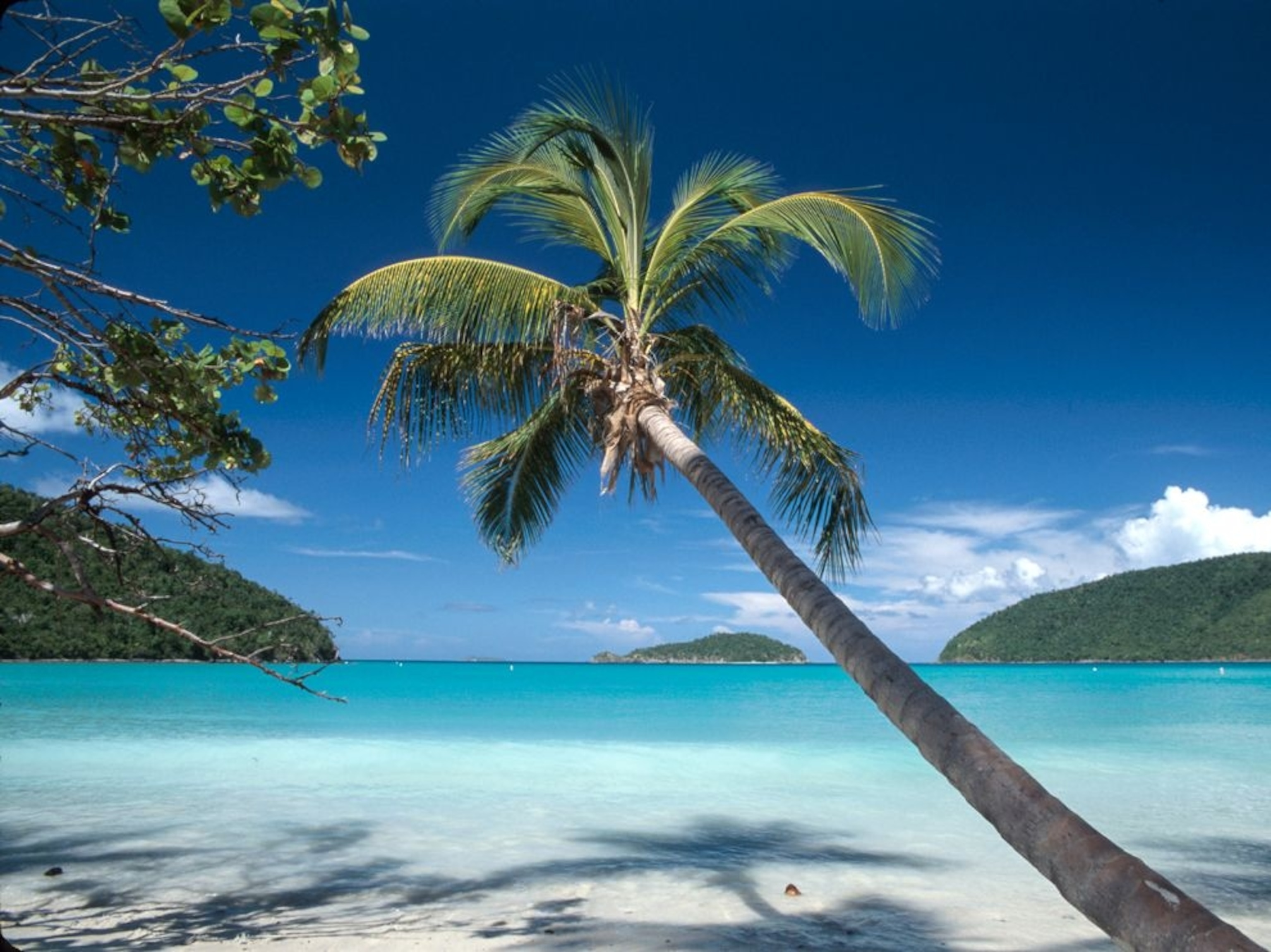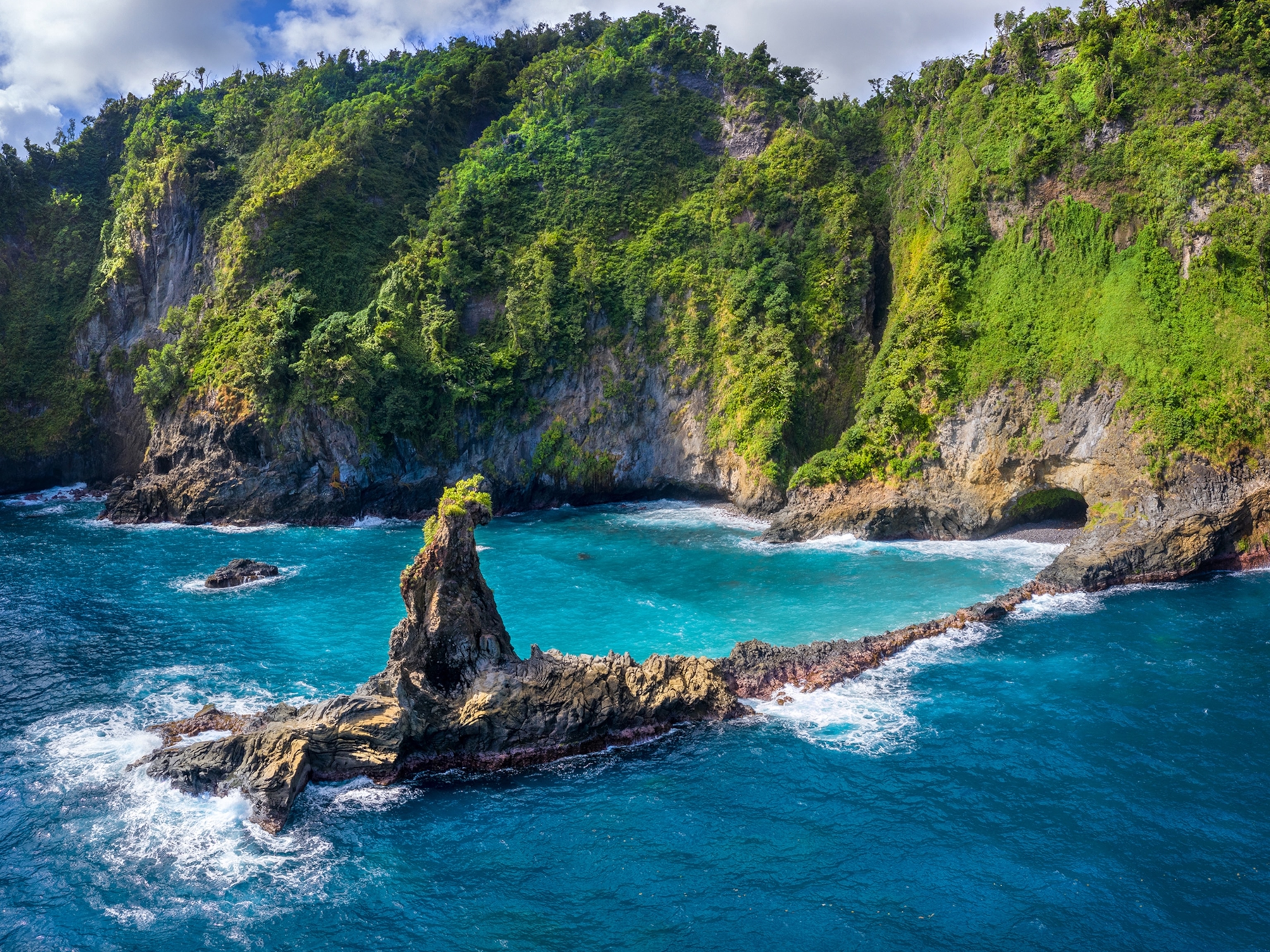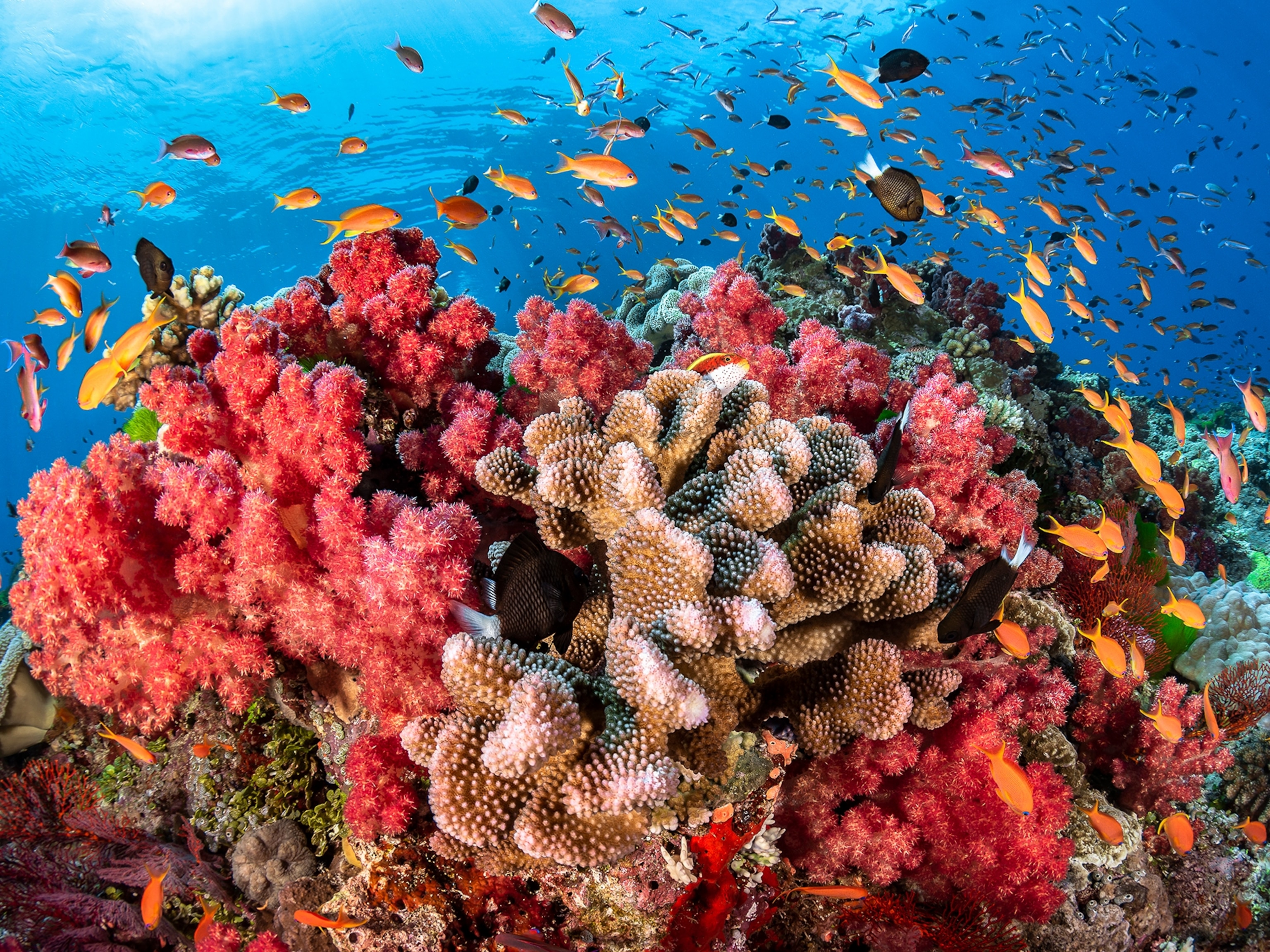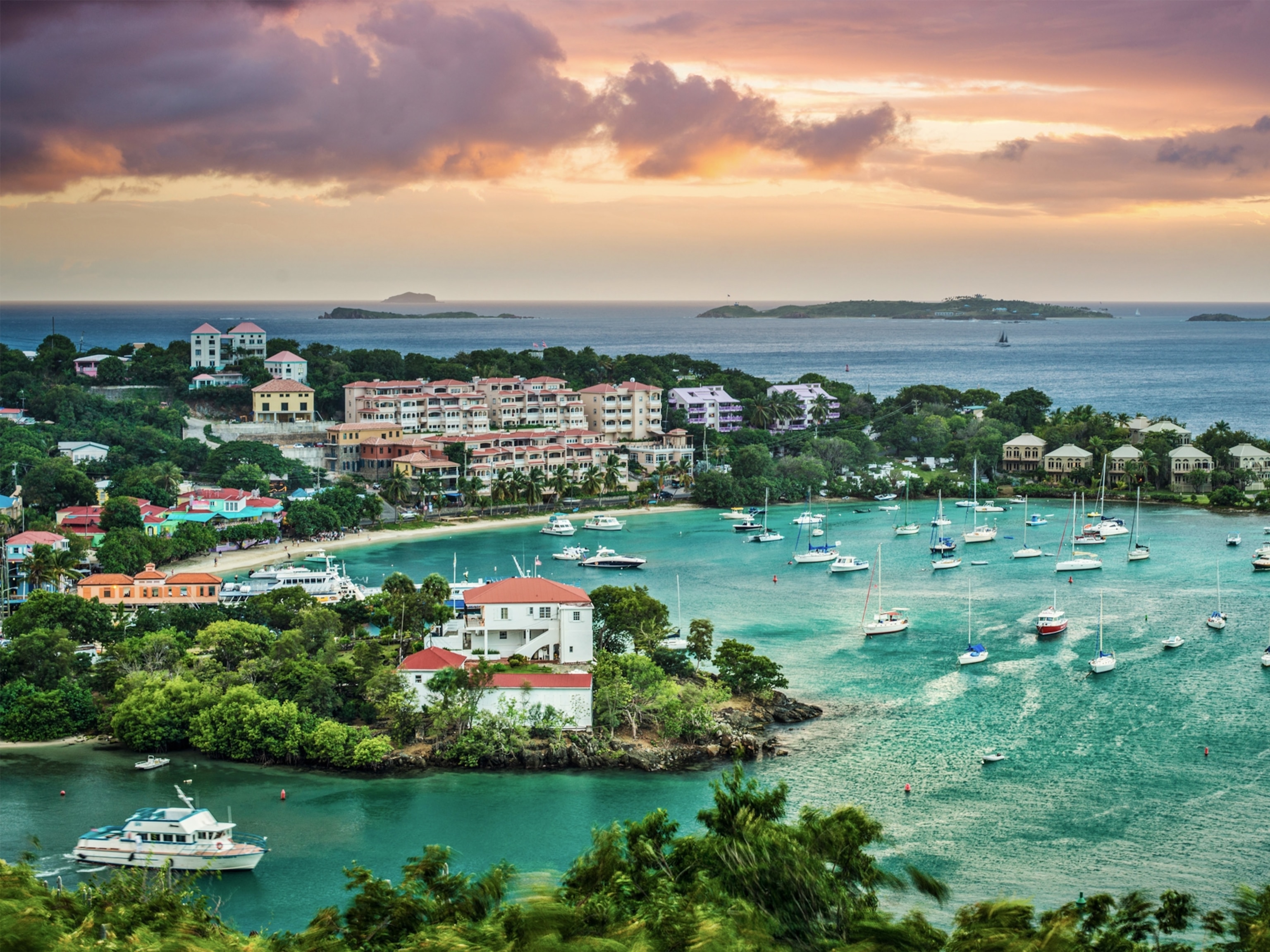
Virgin Islands National Park
Location: U.S. Virgin Islands
Established: August 2, 1956
Size: 15,135 acres
High green hills dropping down to enchanting turquoise bays, white powdery beaches, coral reefs, and ruins that evoke an era of sugar and a tragic period of slavery all find protection on St. John, one of about a hundred specks of Caribbean land known as the Virgin Islands.
Despite its small size—19 square miles—St. John's wide range of rainfall and exposure give it surprising variety. More than 800 subtropical plant species grow in areas from moist, high-elevation forests to desertlike terrain to mangrove swamps, among them mangoes, soursops, turpentine trees, wild tamarind, century plants, and sea grapes. Around the island live the fringing coral reefs—beautiful, complex, and exceedingly fragile communities of plants and animals, which St. John's famous beaches depend upon.
In 1493 Columbus sighted the large assemblage of islands and cays and named it after St. Ursula's legendary 11,000 virgins. Since then, Spain, France, Holland, England, Denmark, and the United States have controlled various islands at different times. The Danes began colonization in the 17th century, and in 1717 planters arrived on St. John. By mid-century 88 plantations had been established there; slaves stripped the steep hillsides of virgin growth and cultivated the cane. By the time the Danes abolished slavery in 1848, the sugar industry was doomed. A fallow, century-long period known as the "subsistence era" followed.
Fearful that the Germans might capture the islands during World War I, the United States bought St. John, St. Croix, St. Thomas, and about 50 smaller islands from Denmark for $25,000,000. In 1956 conservationist Laurance S. Rockefeller donated more than 5,000 acres for a national park on St. John; in 1962 the park acquired 5,650 undersea acres off the northern and southern coasts. Today, though its boundary includes three-quarters of St. John, the national park owns only slightly more than half the island. Of increasing concern is the escalating pace of development on private inholdings inside its borders. It also feels pressure from the numerous cruise ships that disgorge large numbers of visitors at once, badly straining park resources. Some of the park's trails may be closed for maintenance work; ask at the visitor center.
Did You Know?
Much of St. John's vegetation is second-generation growth; most of the island was clear-cut in the colonial period to make way for sugar-cane production.
- National Geographic Expeditions





